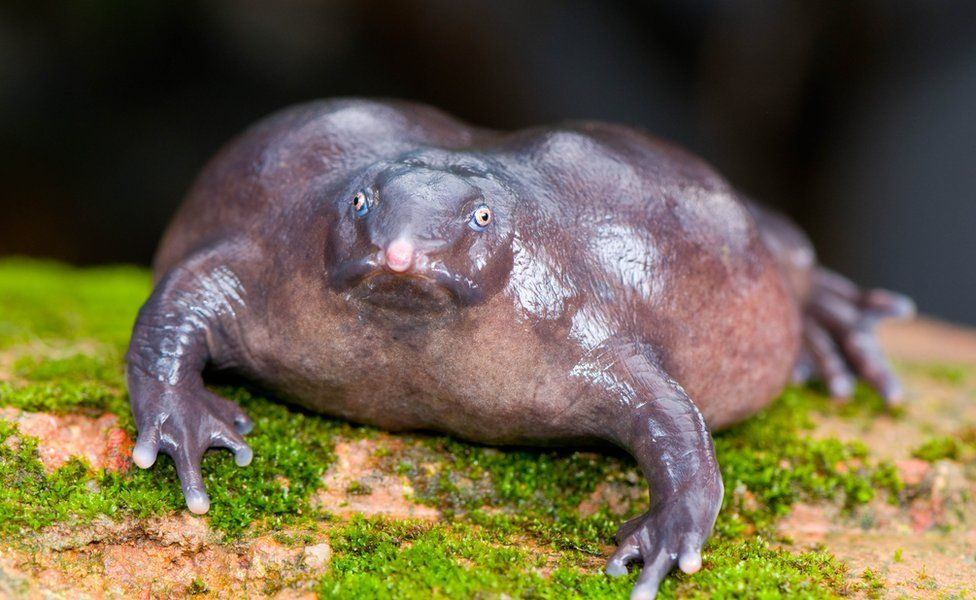Description

Copyright infringement not intended
Picture Courtesy: https://www.bbc.com/news/world-asia-india-35379168
Context: The Purple Frog, a 'living fossil' in the Western Ghats, is a unique amphibian species that has similarities to the Sooglossidae family of frogs in Seychelles.
Key Highlights
- The Purple Frog is commonly known by various names, including the Purple Frog, Maveli Frog, and Pignose Frog. These names are likely used by different communities or regions, reflecting the diverse ways people identify the species.
Uniqueness
- Living Fossil: The Purple Frog's designation as a living fossil suggests its existence alongside dinosaurs, providing a unique window into evolutionary history.
- Gondwana Landmass Hypothesis: Similarities with the Sooglossidae family in Seychelles support the Gondwana landmass hypothesis, indicating shared ancestry due to ancient geological connections.
- Underground Lifestyle: The adaptation of spending most of the year underground is a distinctive feature, likely evolved to avoid predators and harsh environmental conditions.
Appearance
- Body Characteristics: The description of a bloated body, short, stout limbs, and a dark purple to greyish colour provides a detailed visual representation of the Purple Frog.
- Adaptations for Burrowing: Features like short, muscular forelimbs with hard palms tailored for burrowing, and very short hind legs that prevent jumping, illustrate specialized adaptations for its habitat and lifestyle.
Habitat
- Burrow-Dwelling: The preference for loose, damp, aerated soil near water sources and the reliance on burrows for shelter underlines its specific habitat requirements.
- Endemism: Being endemic to select areas in the Western Ghats, primarily in Kerala and Tamil Nadu, indicates a limited geographical distribution.
- Prime Habitat: The mention of the Anamalai hills in Tamil Nadu as a prime habitat provides a geographical context for its preferred living conditions.

Life Cycle
- Breeding Season: The specific emergence during the monsoon season for breeding, lasting 2-3 weeks, reflects a seasonal reproductive strategy.
- Reproductive Behavior: Details about male calls, female egg-laying in fast-flowing streams, and the unique behaviour of females carrying males on their backs contribute to a comprehensive understanding of its reproductive strategies.
- Tadpole Adaptations: The mention of tadpoles having sucker mouths for staying on rocks in streams highlights further adaptations during the developmental stages.
Conservation Status
- The International Union for Conservation of Nature (IUCN) has classified the Purple Frog as "Endangered", signifying a high risk of extinction if conservation efforts are not implemented.
Legal Protection
- Inclusion in Schedule I of the Wildlife Protection Act (Amendment) 2022 indicates legal protection, recognizing the need to safeguard the Purple Frog against exploitation and harm.
Threats
- Habitat Loss: The impact of roads and associated habitat loss poses a direct threat to the Purple Frog's survival, potentially leading to population decline.
- Climate Change: The sensitivity of the species to climate change, affecting both breeding and habitat conditions, points to broader environmental challenges.
- Pesticide Use: The potential harm from pesticide use adds another layer of concern, indicating the intersection of anthropogenic activities with the species' habitat.

Conservation Efforts
- The inclusion of the Purple Frog in the Tamil Nadu Endangered Species Conservation Fund (TNESCF) highlights active efforts at the regional level to raise awareness and secure support for conservation initiatives. This involvement suggests a multifaceted approach to address various threats faced by the Purple Frog, including habitat conservation and public awareness campaigns.
|
PRACTICE QUESTION
Q. The Purple Frog is considered a "living fossil" because:
A) It has remained unchanged for millions of years
B) It was recently discovered after being thought extinct
C) It is found in fossilized form in ancient rock layers
D) It has the ability to survive long periods underground
Answer: A
Explanation:
Purple Frogs share characteristics with ancient frog lineages, suggesting their evolutionary history dates back a long time, potentially to the dinosaur era.
|












